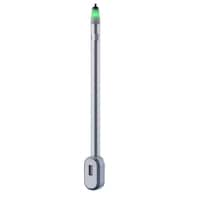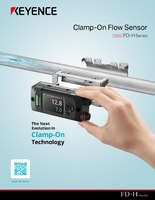
Clamp-On Flow Sensor
FD-H series
Concentration Sensors Probe type FI-C20D
Specifications
Model | FI-C20D | |||
Type | Probe type | |||
Attachment | — | |||
Detection principle | Refractive index (surface light source) | |||
Rated concentration range | Brix: 0–20% (nD: 1.32500–1.37000) | |||
Display method | Status indicator light | |||
Display range | Brix: 0–25% | |||
Supported fluids | Non-corrosive aqueous solutions (such as water-soluble coolants, mold release agents, etc.)*1 | |||
Supported fluid temperature | 0–70°C 32–158°F (no freezing) | |||
Connection diameter | — | |||
Rated pressure range | ||||
Pressure resistance | ||||
Display resolution | Brix: 0.01/0.1% (default value: 0.1) | |||
Response time | 1.0 s / 2.5 s / 5.0 s / 10.0 s / 30.0 s / 60.0 s / 120.0 s / 200.0 s | |||
Measurement accuracy | Brix: ±0.2%*2*3 (nD: ±0.0003) | |||
Concentration unit | Brix nD*4 | |||
Temperature measurement accuracy | ±1.0°C 1.8°F*2 | |||
Power supply | Current consumption | 25 mA or less | ||
Environmental resistance | Enclosure rating | IP65/IP67 (IEC60529) | ||
Ambient temperature | –10 to +60°C 14 to +140°F (no freezing) | |||
Relative humidity | 35–85% RH (no condensation) | |||
Vibration resistance | 10–500 Hz; Power spectral density: 0.816 G2/Hz; X, Y and Z directions | |||
Shock resistance | 100 m/s2 (approx. 10 G), 16 ms pulses, 1000 times each for X, Y and Z directions | |||
Material | Liquid end materials | Sensor element: synthetic quartz | ||
Other materials | Indicator light: PPSU / TPU / PBT | |||
Weight | Approx. 480 g 16.93 oz | |||
*1 Use water as the solvent, and use materials that are soluble in water. If the particles are not water soluble, such as with slurry, the refractive index may not change. | ||||




